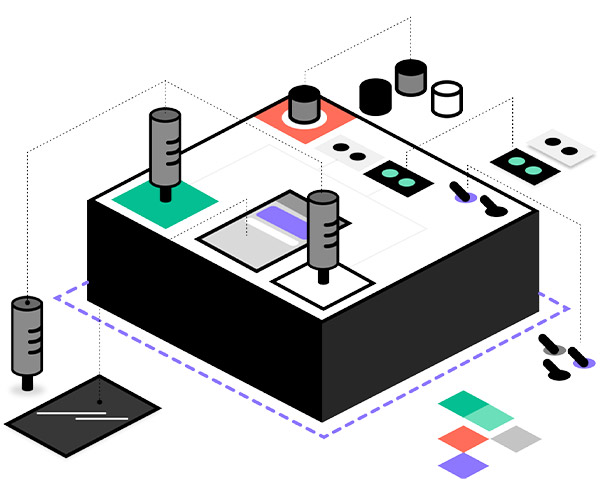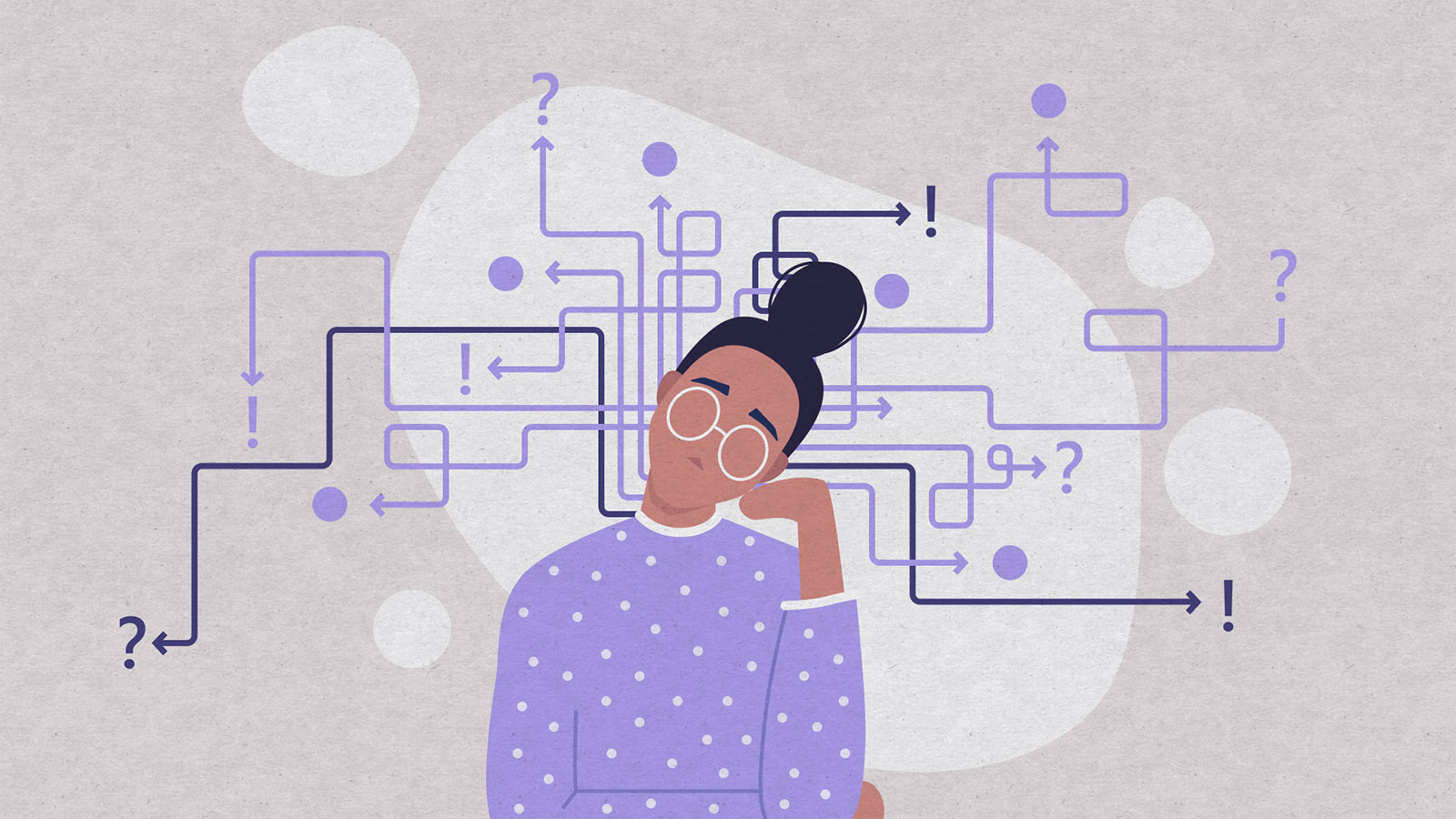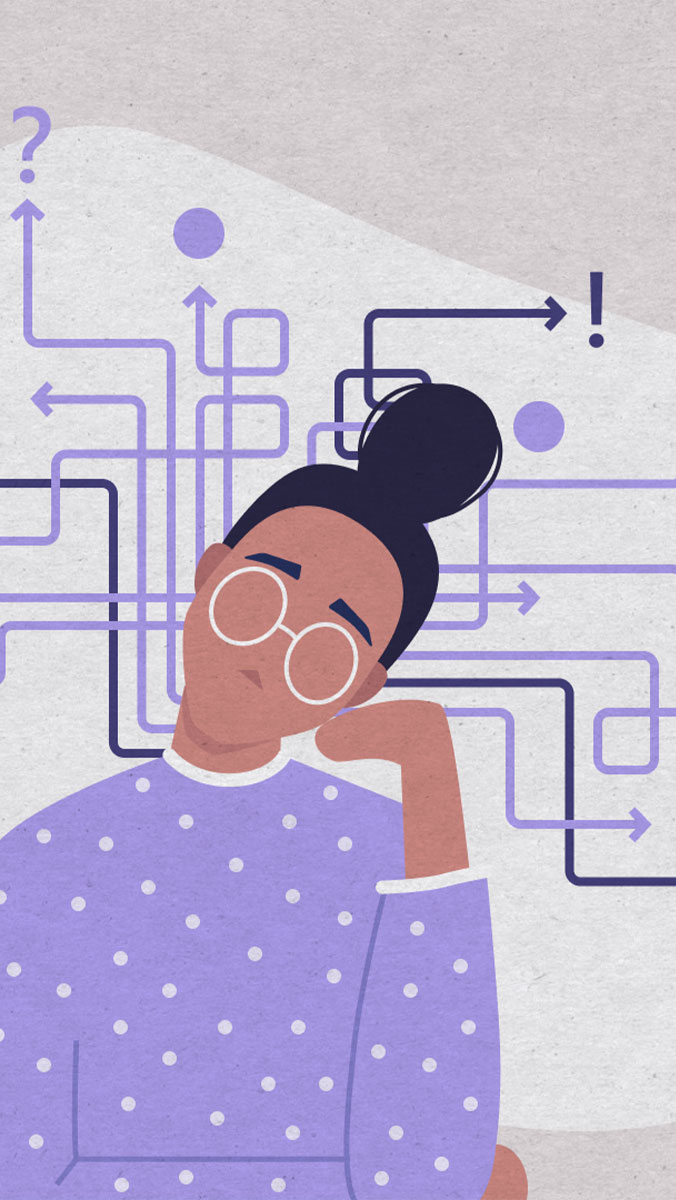Product design is problem solving
The path to designing a great product experience can feel like a twisted maze of problems and endless possibilities.
Some problems are more obvious—and more critical—than others, including the original unmet user need that drove the inception of a product in the first place.
Other problems are not as straightforward, lurking below the surface, unrecognized and unexpected. Issues that, if left unchecked, have the potential to degrade product integrity or risk failure in the hands of users.
When it comes to delivering on the promise of a quality product experience, the key is a designer’s ability to anticipate, identify, and solve these less obvious problems.
But identifying and solving ambiguous problems isn’t something people are inherently good at. The human brain is hardwired to seek out simple, direct causes of a problem to deliver fast solutions (patches). Andrés Zapata, EVP of Strategy at idfive, put it concisely when he wrote, “The brain is an illogical, lazy, guessing machine.”
Fortunately, the designer brain is wired differently. It finds opportunity in the unknown, leveraging an abductive process of creative problem solving, known as design thinking, to identify and work through issues often unseen by others.
But design thinking on its own offers only part of the answer. It can become overly influenced by a designer’s personal experience or interest in a particular solution or idea, resulting in a misinterpretation of the information at hand.
Great designers don’t dwell on solutions. Instead, they focus on identifying and understanding the comprehensive issues at play, creating space where solutions become more obvious once the problems are clearly understood.
If I had an hour to solve a problem, I’d spend 55 minutes thinking about the problem and five minutes thinking about solutions.
Albert Einstein
Systems thinking elevates problem solving to a new level with a more holistic process for identifying and understanding complex product challenges.
It provides an open and flexible framework for strong decision making. One that builds connection and shared understanding across disparate parts of an experience or collection of experiences.
Designers who utilize systems thinking are able to see the interconnected parts of a product experience more clearly. They are able to diagnose root causes rather than merely treat symptoms, and construct outcomes that tackle deeper problems in a way that’s seamless, scalable, and more satisfactory for the user.
The better a designer is at identifying and effectively solving problems, the better the eventual outcome becomes.
Systems thinking often involves moving from a reactive state, jumping on problems as they arise, to a more proactive approach of identifying repeatable patterns of behavior to understand the underlying structures that drive those events.

For example, let’s say there’s a device with one piece (a handle) that keeps breaking off. Rather than just replacing the same piece over and over again every time it breaks, a systems-oriented approach might look at how the handle is constructed and designed (material, shape, attachment), the operational conditions (primary users, interaction frequency, distractions), the environmental conditions (temperature, humidity), and the handling (cleaning, storage). Any of these interconnected factors could be affecting the handle’s performance and durability, causing it to break.
Systems thinking offers a more holistic point of view for examining and solving complex problems. It starts by looking broadly to identify all influencing factors at play, then goes deep to understand why the problem existed in the first place, and finally uses the information collected to identify and prevent other potential issues down the road.
By taking systems thinking from a reactive problem-solving state to a more proactive approach, we get systems design.
Systems design focuses on finding effective, long-term solutions to the problems that users face, upending those obstacles to create a better user experience at scale.
Through a systems-oriented design approach, we are encouraged to work multidirectional, looking both broad and deep for answers in an effort to identify more effective solutions for lasting impact and user relevance.
Even when the problems aren’t immediately obvious, or you head down the wrong path, systems thinking can generate new awareness through perpetual discovery, opening up new connections and bringing you back on track. While also bringing a sense of open-mindedness and opportunity to all aspects of the product design process.
Building systems thinking into a team’s design workflow can significantly improve how they communicate and work together. It can substantially improve the user experience for a single product. And it can deliver cohesion across a family of products through a design system.

